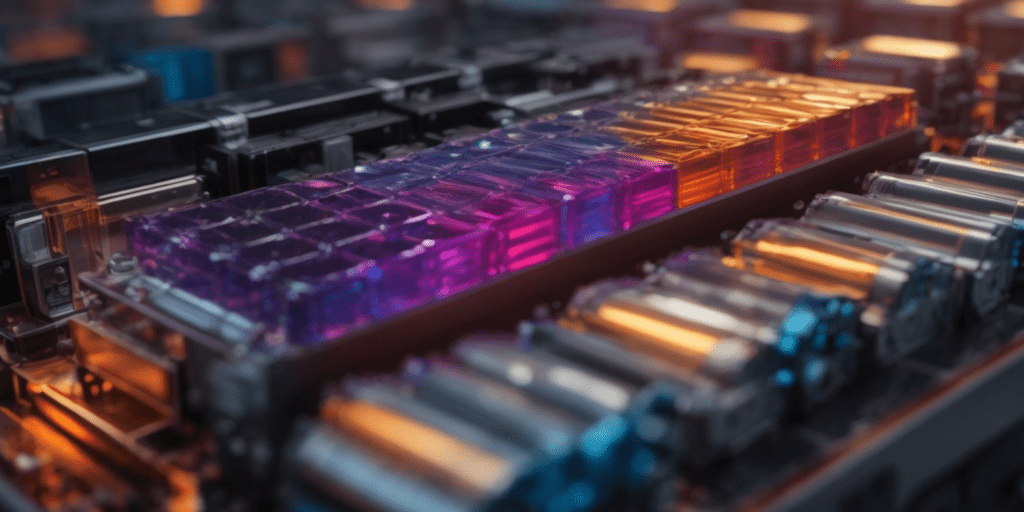In a remarkable convergence of artificial intelligence and scientific innovation, Microsoft and the Pacific Northwest National Laboratory (PNNL) have achieved a groundbreaking discovery in battery technology.
This article delves into the significant breakthrough where Microsoft’s advanced AI algorithms screened over 32 million candidates, identifying a new material that heralds a significant leap forward in the development of sustainable battery technology.
At the heart of this discovery lies the powerful synergy between AI and high-performance computing, revolutionizing materials research’s traditionally lengthy and complex process.
The role of Azure Quantum Elements, a product developed by Microsoft, is pivotal in this success story, integrating AI with cloud computing to expedite the scientific discovery process.
This introduction sets the stage for a detailed exploration of the processes and collaborations that led to this innovative breakthrough. It underscores the importance of sustainable energy solutions in today’s world, where the limitations of current lithium-ion batteries present significant challenges.
We will uncover how this AI-driven discovery not only showcases the potential to reduce lithium usage significantly but also opens a new chapter in the quest for efficient, safe, and environmentally friendly energy storage solutions.
Background
In an era of increasing reliance on technology, the demand for efficient and sustainable energy storage solutions has never been greater. Current lithium-ion batteries, while effective, pose environmental challenges, particularly in terms of lithium mining and its ecological footprint.
Lithium, a key component in these batteries, is finite and geographically concentrated, leading to supply concerns.
The mining and processing of lithium have significant ecological repercussions, including water and energy consumption.
Leveraging its AI and computing prowess to address challenges in battery technology.
A leader in chemistry, earth sciences, and data science, PNNL brings crucial scientific insight to the collaboration
The AI-Powered Screening Process
Microsoft’s AI screened an unprecedented number of potential materials – over 32 million candidates. The AI system processed a vast inorganic materials database, showcasing its capability to handle large-scale data analysis.
What traditionally could take decades was accomplished in days, highlighting the efficiency of AI in screening processes. From the initial pool, AI identified around 500,000 materials predicted to be stable.
The AI algorithms evaluated materials based on stability, reactivity, and energy conduction potential. This part of the process demonstrates the remarkable capability of AI to handle and analyze data at scales and speeds unachievable by traditional methods.
The success in swiftly narrowing down a vast pool of candidates to a manageable number of stable materials is a testament to the power of AI in revolutionizing research methodologies in material science.
Role of Azure Quantum Elements
Azure Quantum Elements is a Microsoft-developed platform designed to accelerate scientific discovery using AI, cloud computing, and high-performance computing (HPC). It is a crucial tool for researchers and scientists, facilitating chemistry and materials science advancements.
Azure Quantum Elements merges AI capabilities with cloud-powered HPC, providing a robust platform for complex computational tasks. This integration significantly reduces the time and resources required for large-scale data analysis and simulation.
The platform was instrumental in the AI-driven screening of over 32 million material candidates, showcasing its powerful computational abilities. Azure Quantum Elements managed the extensive data from AI models and simulations, ensuring accurate and efficient processing.
Plans to incorporate quantum computing into Azure Quantum Elements are anticipated to revolutionise material science further. Quantum computing is expected to provide greater accuracy and solve complex problems that are currently beyond the reach of classical computing.

PNNL And Microsoft
The Pacific Northwest National Laboratory (PNNL) is renowned for its chemistry, earth sciences, and data science expertise, which is crucial for this collaborative project. PNNL has a strong track record in developing and validating next-generation energy storage technologies, making it an ideal partner for this endeavour.
Microsoft’s AI and computational capabilities were complemented by PNNL’s scientific expertise, creating a powerful synergy for material discovery. Both teams worked collaboratively to harness the potential of AI for screening and analysing material candidates.
PNNL was responsible for synthesizing and testing the new material identified by Microsoft’s AI, turning theoretical data into practical results. PNNL’s role was crucial in verifying the stability and suitability of the AI-identified material for battery technology.
This collaboration significantly reduced the time traditionally required for such scientific discoveries, demonstrating the effectiveness of combining AI with domain-specific expertise.
The success of this partnership sets a precedent for future collaborative efforts in other areas of scientific research.
Advancements in Battery Technology
The newly discovered material represents a significant advancement over traditional lithium-ion batteries, primarily in its reduced reliance on lithium. The material addresses environmental and resource scarcity issues by utilizing less lithium and incorporating other elements like sodium.
The new material uses approximately 70% less lithium, which is crucial given the resource scarcity and the environmental impact of mining. Solid-state batteries, like the one developed, are generally considered safer and offer higher energy density than conventional lithium-ion batteries.
The reduced need for lithium alleviates the environmental strain caused by its extraction and processing. With less reliance on a scarce resource, the new battery technology could be more cost-effective and accessible.
The characteristics of the new material suggest it could be used in various applications, from consumer electronics to large-scale energy storage. This advancement is a significant stride in the quest for more sustainable and environmentally friendly energy storage options
The Rapid Development Process
The use of AI and high-performance computing allowed for screening over 32 million candidates in a remarkably short time. This process traditionally could have taken decades. AI rapidly identified 500,000 stable materials from the initial pool, significantly accelerating the discovery phase.
Microsoft’s AI and Azure Quantum Elements’ cloud computing capabilities played a crucial role in swiftly processing and analysing vast datasets. HPC was essential in verifying and refining the AI’s findings, enabling quick progression from theoretical data to practical application.
The entire process, from concept to working battery prototype, was completed in less than nine months, showcasing the potential of AI and HPC in shortening R&D cycles.
This rapid development process exemplifies how AI can transform the approach to scientific research, making it more efficient and result-oriented.
Future Prospects and Quantum Computing
Quantum computing is expected to offer unparalleled computational capabilities, increasing the accuracy and speed of material simulations and analyses. Using classical methods, Quantum computing will enable scientists to tackle complex, infeasible problems.
Microsoft plans to incorporate quantum-ready tools into Azure Quantum Elements, preparing for a future where quantum and classical computing coexist. This integration will facilitate the development of hybrid algorithms that combine classical and quantum computing, offering new possibilities in research and discovery.
Quantum computing is expected to further shorten the timeframes for scientific discoveries, making research more dynamic and responsive. With its advanced capabilities, quantum computing will likely enable exploration into new areas of science and technology, leading to breakthroughs in various fields.
Integrating quantum computing could lead to more significant advancements in battery technology, including discovering even more efficient and sustainable materials. The potential of quantum computing extends beyond material science, with implications for industries ranging from pharmaceuticals to renewable energy.
Final Thoughts
The collaboration between Microsoft and the Pacific Northwest National Laboratory (PNNL) in discovering a new sustainable battery material represents a monumental leap in material science and sustainable technology.
This achievement clearly demonstrates the transformative power of artificial intelligence and high-performance computing in accelerating scientific discovery.
The rapid screening of over 32 million candidates, leading to the identification and development of new battery material, marks a significant departure from traditional research methodologies. It showcases the potential of AI to redefine the timelines and efficiency of scientific innovation.
Integrating these technologies with expert scientific knowledge has accelerated the development process and opened new avenues for future research.
The success of this project extends beyond the realm of battery technology; it is a testament to the potential of interdisciplinary collaboration and technological innovation in addressing global challenges.
As we look to the future, this breakthrough offers a glimpse into a new era of scientific discovery where AI, quantum computing, and human expertise converge to create solutions for a sustainable world.


